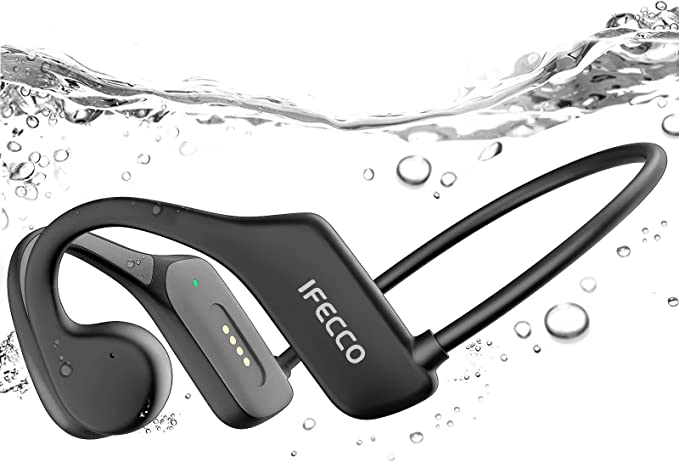The Ritual Economy: How Brands Design and Sell a Priceless Morning Moment
Update on Oct. 12, 2025, 6:10 p.m.
Consider two ways to start a day.
In Morning A, a smartphone alarm shatters the silence. You fumble to dismiss it, scroll through a barrage of notifications, then stumble to the kitchen. You insert a pod into a machine, press a button, and 30 seconds later, a generic cup of coffee is ready. The need for caffeine is met. The day has begun, abruptly.
In Morning B, there is no jarring alarm. Instead, a soft gurgling sound and the rich, unfolding aroma of brewing coffee gently pull you from sleep. You watch as hot water slowly drips over fresh grounds, the dark liquid collecting in a glass cup waiting by your bed. You take the first, mindful sip. The day has been invited, deliberately.
The functional outcome—a cup of coffee—is similar. But the value of the experience is worlds apart. Why would someone pay a premium, like the $429 price tag for the Barisieur alarm clock that facilitates Morning B, for something that is arguably less efficient?
The answer is that they aren’t buying a coffee machine. They are buying a better morning. They are investing in a ritual. This shift from valuing function to cherishing feeling is the cornerstone of the burgeoning Ritual Economy.

From Function to Feeling: The Rise of the Ritual Economy
For decades, the consumer landscape was dominated by a race for convenience. Faster, easier, cheaper. But as our basic needs have become effortlessly met, a new desire has emerged: the search for meaning in the mundane. We are moving beyond the “Experience Economy”—where we paid for memorable events—into something deeper. The Ritual Economy is where consumers pay to embed meaningful, repeatable actions into their daily lives.
A ritual, in this context, is not a religious ceremony. It is a sequence of actions, imbued with personal meaning, that transforms a routine task into a mindful practice. It’s the difference between refueling (eating a protein bar) and dining (savoring a meal). The Barisieur isn’t selling a 2-ounce cup of coffee; it’s selling the narrative of a calm, controlled, and sensory start to the day. This is a powerful value proposition, tapping into a market that, according to firms like Grand View Research, sees consumers increasingly spending on wellness and personal enrichment.
But how do you design a product that facilitates a ritual? It’s a deliberate act of choreography.
Designing a Ritual: The Anatomy of a Meaningful Moment
A successful ritual isn’t accidental. It’s a carefully constructed experience that engages the user on multiple levels. We can deconstruct this process using a framework I call The Ritual Design Canvas.
Actionable Asset: The Ritual Design Canvas
| Canvas Module | Guiding Question | Barisieur Case Study Example |
|---|---|---|
| 1. Trigger | What initiates the ritual? | The pre-set alarm time approaches, beginning the brewing process. |
| 2. Investment | What effort or focus does the user contribute? | The nightly preparation: grinding beans, filling water, adding milk. |
| 3. Sequence | What are the distinct, repeatable steps? | Water heats -> Pours over grounds -> Coffee drips -> Alarm sounds. |
| 4. Sensory Input | Which senses are intentionally engaged? | Sound (gurgling water), Smell (brewing coffee), Sight (visual process), Touch (warm cup, wood tray). |
| 5. Anticipation | How is a sense of rewarding expectation built? | The 5-10 minute process of watching and smelling the coffee brew before you can drink it. |
| 6. Reward | What is the immediate payoff? | The first, satisfying sip of freshly brewed, hot coffee without leaving bed. |
| 7. Meaning | What deeper personal value does the ritual provide? | A sense of self-care, control over one’s morning, a moment of peace before the day’s chaos. |
By analyzing the Barisieur through this canvas, we see it is not merely an appliance. It’s a stage, and its design prompts a specific performance. The user’s nightly investment of preparation makes the morning reward feel earned. The slow, multi-sensory sequence builds anticipation, transforming a simple cup of coffee into a climax. The entire process is imbued with the meaning of a deliberate, mindful start to the day.
This is a stark contrast to the one-button convenience of a pod machine, which, in its ruthless efficiency, strips the process of any potential for ritual.

The Double-Edged Sword of Ritual Design
For brands, leaning into the Ritual Economy presents a massive opportunity. Products that successfully embed themselves into a user’s ritual command incredible loyalty and premium pricing. Think of the elaborate multi-step skincare routine, the vinyl record listening session, or the artisanal pour-over coffee setup. These are not just products; they are hobbies, identities, and anchors in a person’s day.
However, this path is fraught with peril. A ritual, by definition, requires effort. And there is a fine line between a meaningful ritual and a tedious chore. This is where the engineering and reliability of a product become paramount.
The customer reviews for the Barisieur reveal this tension perfectly. For every user who adores the “fantastic design” and “superb coffee,” there is another who complains that it “overflows grounds,” “makes a tiny cup,” or even “melted.” When a product designed to create a calm, controlled ritual fails in its basic function, it shatters the entire narrative. The intended feeling of peace is replaced by frustration and disappointment, a betrayal far worse than a simple appliance malfunctioning.
The lesson is clear: a ritual cannot be built on a foundation of inconvenience or unreliability. The value of the ritual must far outweigh the effort of the investment. For some users, the Barisieur strikes this balance perfectly. For others, it’s a “performance piece” or a “gimmick”—a clear sign that the ritual has become a burden.

Conclusion: The Future of Products is a Search for Meaning
The Barisieur alarm clock is a fascinating cultural artifact. It represents a pivot in consumer desire—away from pure, unadulterated convenience and towards something more soulful. It is a bet that, for the right person, the how of the morning coffee is more important than the what.
As designers, marketers, and builders, the challenge is to recognize this shift. The next great products won’t just solve problems; they will provide platforms for personal ritual. They will understand that in a world of overwhelming speed and efficiency, the most valuable commodity is a moment of deliberate, meaningful peace. The brands that learn how to design and sell that moment will not just win customers; they will earn devoted followers.






















































